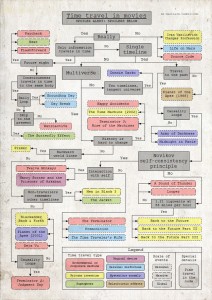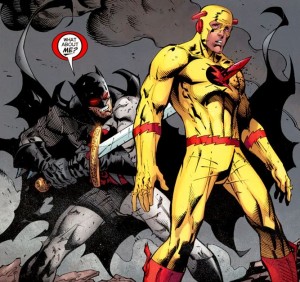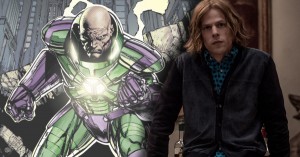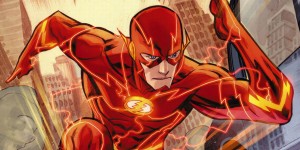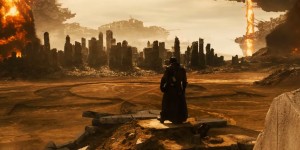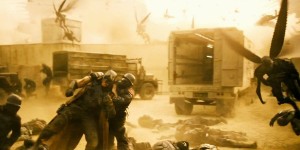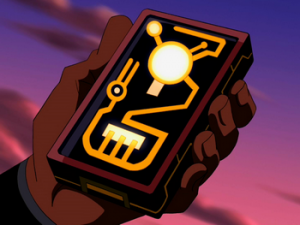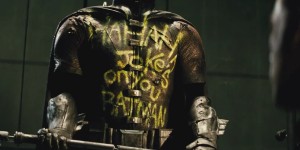Time Travel – In Science and Fiction
Conceptually popularized in fiction by the 1895 novel The Time Machine by H.G. Wells, time travel has been featured in countless speculative fiction novels, television series, and movies in the mainstream media. In fiction, novel’s utilizing its concept tend to focus on historical tampering – how ostensibly insignificant acts along a timeline can drastically bring change to the present and future, whether they be intentional or inadvertent. Alternately (pun intended), other plotlines concentrate on the notion of alternate timelines and the creation thereof. Affecting protagonists in different ways, journeying through the time-space continuum sometimes will cause colossal impact and other times no change at all. Speculative fiction in general tends to discuss contemporary issues in a poetic, metaphorical way, and time travel enables this process. Sean Redmond says it creates a “necessary distancing effect” – stepping out of one’s timeline inherently forces them to objectively assess their initial circumstance and the chain events that brought it about. From works as stoic as Star Trek (2009) to series as lighthearted and buoyant as Back to the Future, time travel functions in a diversity of genres, styles, and media forms (Everything Explained 2016).
Michio Kaku from Wired Magazine wrote, “Once confined to fantasy and science fiction, time travel is now simply an engineering problem” (Notable Quotes 2016). The notion of using a mechanism to bend time and space is old, but the science behind the related hypothetical quantum physics have developed quite rapidly recently. Depictions have moved from a lazily written and hastily explained phenomenon (i.e. Kindred in 1979) to a very meticulously elucidated and intelligently described process that feels quite real (i.e. Interstellar’s spectacular utilization of quantum physics and the theory of relativity). Scientific theories that once were solely understood and known by the educated elite are now well-executed plot props in mainstream media.
The initial requisite for understanding the complexity of time travel lies in the obvious portion – understanding time. Since the dawn thereof, time has been considered a constant, linear continuum – seconds, minutes, and years pass at a consistent rate in a singular direction. Albert Einstein, however, theorized otherwise. He argued that this appearance is merely an illusion: time is relative. Since humanity has lived on the same planet that travels at the same speed along the same path each year (or so we believe), a belief that time only operates in one undeviating fashion is inclined to be the status quo. Three dimensions are visible in space to the simple eye: length, width, and depth, but Einstein theorized that there is a fourth dimension that completes the fabric of time and space – direction (Howell 2013).
His theory of special relativity claims that time’s speed varies contingent upon how fast an object or individual is moving relative to another reference point. From complete stagnation to the speed of light, time operates differently depending on an individual or object’s velocity. Relevantly, Einstein’s theory of general relativity argues that gravity can bend time itself. Space and time make up a four-dimensional fabric in which humanity operates. That fabric is sensitive to mass, or the people and things taking up its space. This sensitivity is experienced, theoretically, in the form of gravity. When space and time bend due to their reaction to mass, the continuum travels on a curved pathway in opposed to a straight one, causing objects to be attracted to one another dependent on their relative masses (Howell 2013).
Both of these theories have been partially proven – and their effects are seen as technology further develops. When the spatially and temporally challenged go driving in an unknown community, Global Positioning Systems more colloquially referred to as GPS’ tend to lend a helping hand. Satellites orbing Earth are able to triangulate one’s location and map the surrounding area. What people do not tend to think about, however, is the fact that the aforementioned satellites are traveling at a base speed greater than that of the surface since they have a greater circumference to cover. This causes them to gain 0.0000038 seconds per day – an easy fix for a good engineer. This phenomenon is known as time dilation, and causes very slight differences in experiential time that can practically be seen (Howell 2013).
There are a plethoric excess of time travel theories, and that is primarily because the entire process is completely hypothetical, researching it is highly unpractical and expensive, and actually achieving significant time travel, while technically possible, is entirely improbable. Nonetheless, the science surrounding the subject is intrinsically causing speculative fiction to grow more speculative, and giving birth to pieces taking all of these theories to a literary level.
Beyond the logistics of time travel, the implications of its effects on timeline(s) is explored in depth in the genre of speculative fiction. Given the vast amount of literature and media published with time travel as a plot point – there are seemingly endless styles of executions of time travel and its effects on the world. A beautiful graphic sorts out all of the different types of time travel theories in movies in a way that would be rather arduous to verbally explain.
(More readable at http://gizmodo.com/5994682/a-flow-chart-explaining-all-time-travel-in-movies.)
Nonetheless, in an effort to keep it simple (and between 3000 and 4000 words), there are three foundational schools of thought in these regards: fixed timeline, dynamic timeline, and multiverse.
In a fixed timeline, there is a singular, internally consistent, rigid timeline that cannot be altered. Individuals have the capacity to travel forward and or backwards along this timeline to some extent, but the actions they make in their endeavors either have no impact or have already had an impact. Fictional examples of this theory include The Hitchhiker’s Guide to the Galaxy, and The Terminator.
The Hitchhiker’s Guide to the Galaxy is a book that is both hilarious and intelligent. Held as one of the funniest and most quotable speculative fiction comedies ever published, the novel is also dripping with intellectual prose – the notion of creating a protagonist that is dull, simple, and unimportant for a novel written on a galactic scale requires immense writing talents. One area of focus, though, that the novel glances over is the academically perplexing issue of time travel. The fixed timeline theory is the simplest – the easiest to understand as well as the easiest to write about. In light of this, a book as fun and easy to read as The Hitchhiker’s Guide to the Galaxy would naturally be inclined to go with the simplest option.
“One of the major problems encountered in time travel is not that of becoming your own father or mother. There is no problem in becoming your own father or mother that a broad-minded and well-adjusted family can’t cope with. There is no problem with changing the course of history—the course of history does not change because it all fits together like a jigsaw. All the important changes have happened before the things they were supposed to change and it all sorts itself out in the end.
The major problem is simply one of grammar, and the main work to consult in this matter is Dr. Dan Streetmentioner’s Time Traveler’s Handbook of 1001 Tense Formations. It will tell you, for instance, how to describe something that was about to happen to you in the past before you avoided it by time-jumping forward two days in order to avoid it. The event will be described differently according to whether you are talking about it from the standpoint of your own natural time, from a time in the further future, or a time in the further past and is further complicated by the possibility of conducting conversations while you are actually traveling from one time to another with the intention of becoming your own mother or father.”
This concludes the explanation of how time travel functions in the universe. This sort of quirky writing is in large part the charm of the book – skipping over the scientific explanation of time travel to make time to explain the grammatical issues associated with it. The issue is not becoming one’s father, the issue is explaining how to verbally reference an event that has already happened, but not yet – or already not happened, so to speak. Even this topic of the difficulties of language in space, which maintains much more focus throughout the novel, ends up being explained away. Time travel tenses are confusing enough in one language, let alone through translation across thousands of tongues and dialects. How do people manage communication given all of these difficulties? Well, you put a fish in your brain. Why? Because it’s what you do. How does it work? It works by having a fish put in your brain to understand all of the universe’s languages. The novel never attempts to create deeply explained pseudoscience to add to the reality of the book, as the book never displays an effort to feel “real.” It’s intended to be a fun read, not a brilliant novel that leads to introspective analysis of oneself and scrutiny of society’s current standings. Time travel is fun! Science is not. So a fixed timeline made for the best option in The Hitchhiker’s Guide to the Galaxy’s references to time travel.
Departing from this intentional use of a poorly explained time travel model, The Terminator series does this in a mind-boggling manner throughout five blockbuster movies and one almost-average television series.
The initial movie of the series kicks it off with implications that the universe follows the fixed timeline theory – casualty is absolute, and there is a single timeline. The changes that one could cause in the past through time travel have already occurred, and are events on a very, very confusing singular timeline. This is not readily apparent in the beginning of the movie, but a journey of twists and turns eventually informs the audience of the continuum model being utilized.
John Connor in the future is leading the Resistance, a group of humans fighting against their technological overlords, Skynet – and John Connor might just be able to turn the tide in humanity’s favor. Recognizing this danger to their cause, they send back a Terminator robot to kill John Connor’s mother before she birthed the rebel fighter. Countering this effort, John sends back one of his best friends and fellow freedom fighters, Kyle Reese, to protect his mother. It is odd that his task was protection, but he did not use it. John’s friend then impregnates John’s mother, putting a baby John Connor in her belly. The Terminator is defeated, John is still born, and all is right in the world.
Or is it? The following four movies take the audience further down the line – John is born, and attacked twice more by robot assassins of higher technological caliber, John leads troops in The Final Battle (although everyone knew it would not be), and John eventually gets turned into a human-terminator cyborg and goes back in time to serve as an antagonist for young-adult Sarah Connor (John’s mother) and Kyle Reese (they were really milking the franchise at this point). The most confusing aspect of this utilization of the fixed timeline model lies in this paradox – everything anyone does to alter the timeline has already happened. Any hint to a younger version of one’s self has already been given, and lays subconsciously within their current mind. Any hit on someone earlier in their life has already been thwarted. Marginal changes resulted in the timeline due to the tampering, so it is not to say that it was perfectly fixed – “Judgment Day”, an important date in the series, fluctuates in time depending on time travelers’ interference. However, no real change ever happens, because the change has already happened. The beauty of such an intelligent time travel model is clear – when it gets too confusing to understand, the viewer assumes it is their lack of intelligence contributing to their perplexity and merely sit back, grab a tub of popcorn, and watch the Governor of California blow things up.
In a glance – a fixed timeline example in fifty words or less: In order to prevent WWII, person A goes back in time to replace baby Adolf with another baby. That baby, however, ends up being the Adolf that was in the original timeline, and WWII was inevitable.
Conversely, and somewhat more intuitive, is the dynamic timeline theory. In this model, altering events in the past have definite, massive impacts on the present timeline. An individual has the capacity to travel in time, but influencing circumstances in the past or learning information regarding the future has the ability to completely alter the timeline. When traveling backwards in time, the all-too-familiar “butterfly effect” plays out – seemingly insignificant alterations to chains of events have exponentially larger impacts in the future. Bumping into someone could cause them to spill a drink on themselves, causing them to miss their flight, preventing them from dying in a plane crash, causing a zany change of events that completely change what would have happened in an unaltered timeline. Similarly, traveling to the future grants the traveler information they otherwise would not have, causing them to act differently than they would have in their initial ignorance, therefore changing said future.
A great (and excessively entertaining) example of this time travel model is the classic hit Back to the Future. The movie begins with Marty McFly as the protagonist, an aspiring musician and a son of a timid cubicle worker and a depressed, overweight alcoholic. Marty’s friend, Doc Brown, informs him of a time traveling machine he had put together. When plans go awry, Doc is shot and killed while Marty goes back in time to 1955, when his parents and Doc were all much younger. A seemingly insignificant event, Marty saves a man from getting hit by a car. What Marty failed to realize was this man was his father, the car’s driver was his grandfather, and he had just prevented his parents from meeting. Marty’s task then became threefold – to get back to the present, to prevent Doc Brown’s eventual death, and to make sure his parents fall in love in order to prevent his existence being wiped off of the Earth.
Through excessive meddling and temporary failures to achieve his goals early on, Marty McFly returns to the present to find out that although he succeeded in mitigating his actions in the past, he still left a dent in the timeline. Doc Brown heeded Marty’s advice about the attack, and wore a bulletproof vest the day of the experiment. Marty’s father was a successful and confident author, while his mother was an in-shape and happy housewife. The movie ends with Doc Brown coming from the future to request Marty’s help in the year 2015.
This timeline appears to be the most intuitive – there is a singular timeline, but traveling across it (backwards or forwards) will alter its course of events and lead to change. Marty’s parents still ended up together, but they lived drastically different lives. Doc Brown was still ambushed the day of the experiment, but he was prepared for it and consequently survived. If the Terminator followed this plotline, Kyle Reese traveling back in time would not have enabled him to father John Connors, as that event was already a point in the line. A Terminator, however, would have been capable of killing Sarah or John to prevent his leadership in the war, or Kyle could have still slept with Sarah but having a child other than John, in turn affecting the likelihood of his birth.
In fifty words or less: if an individual went back in time and killed their grandfather, they would in turn prevent the birth of their parent, preventing their own birth from ever occurring. This would lead to their existence being wiped from existence, and an alternate reality taking place that could be drastically different.
Lastly, the last major school of thought in science fiction regarding time travel is the multiverse theory. This model supports alternate timelines and parallel universes. Throughout the cosmos, there are an infinite number of alternate timelines according to this theory. Traveling through time causes the creation of a new timeline identical to the original up to the point of travel. However, from that point on every action taken impacts the new timeline, but not the original. This theory is similar to the “save as” feature on Microsoft Word: the document is copied and duplicated; the new document is separate from the original, but identical to it; but changes can be made to it without altering the original document whatsoever. A modern science fiction film featuring this school of thought is Star Trek (2009).
The multiverse theory is perfect for a reboot – it allowed director and writer JJ Abrams the creative license he needed to recreate the franchise and adapt the characters in order to create a cast catered to a 21st century audience. Ambassador Spock in the year 2387 is on a mission to remove a supernova that will otherwise lead to the demise of the entire galaxy. Unfortunately, he is too late and the supernova destroys the planet of Romulus. Nero, the Romulan commander, blames Spock for this cataclysm and attempts to take vengeance. These events eventually lead to both Spock and Commander Nero being sucked into a black hole and sent back in time to the year 2233 in an alternate timeline. When Nero arrives, he attacks the USS Kelvin and subsequently kills George Kirk, the father of the famous Captain James Kirk. James survives the incident, but loses his father, and grows up in a broken home. This leads to him being a different kind of “Captain Kirk,” his leadership, talent, and athleticism remains, but a certain cheekiness, rebellion, and brazenness are tossed into the mix. The James Kirk and S’chn T’gai Spock in this timeline spend most of the movie at odds, leading to Spock deserting Kirk for mutiny. During Kirk’s deserting, he meets another Spock – the Spock that traveled from the year 2387. This Spock advises Kirk as to the best course of action, and the beloved Captain Kirk takes charge of the USS Enterprise and is restored to glory.
In this timeline model, there is no singular timeline, and there is no way to go back in time to change one’s home universe. If this was possible, it is likely Nero’s cause would have been to prevent the supernova from killing his friends and family instead of taking revenge on the man he held responsible (which lead to him destroying Spock’s home world). Nero died in battle in his quest for alleged revenge, but the original timeline’s Spock spends the remainder of his days in the fresh continuum, alongside the new Spock (respectively played by Leonard Nemoy, the original actor in the 20th century and Zachary Quinto, the new actor to take the reigns for the role).
In fifty words or less: an individual travels through time, arriving in a timeline seemingly identical to their own and kill their grandparents. This does not change the original timeline nor prevent the individual’s existence. Here the individual will not be birthed, but will be present because of their insertion.
Time travel is a fascinating subject, and science fiction has proven to be the most effective vehicle for bringing its implications into discussion. Some novels and movies tend to be more scientifically accurate than others, and some tend to care about at least making it feel real more than others. Nonetheless, it makes for an interesting conversation topic (that you can now impress your friends with), and nearly always makes for an entertaining narrative.
Works Cited
Howell, Elizabeth. “Time Travel: Theories, Paradoxes & Possibilities.” Space.com, 21 June 2013. Web.
“Time Travel Quotes.” Notable Quotes, 2016. Web.
“Time Travel in Fiction Explained.” Everything Explained, 2016. Web.
